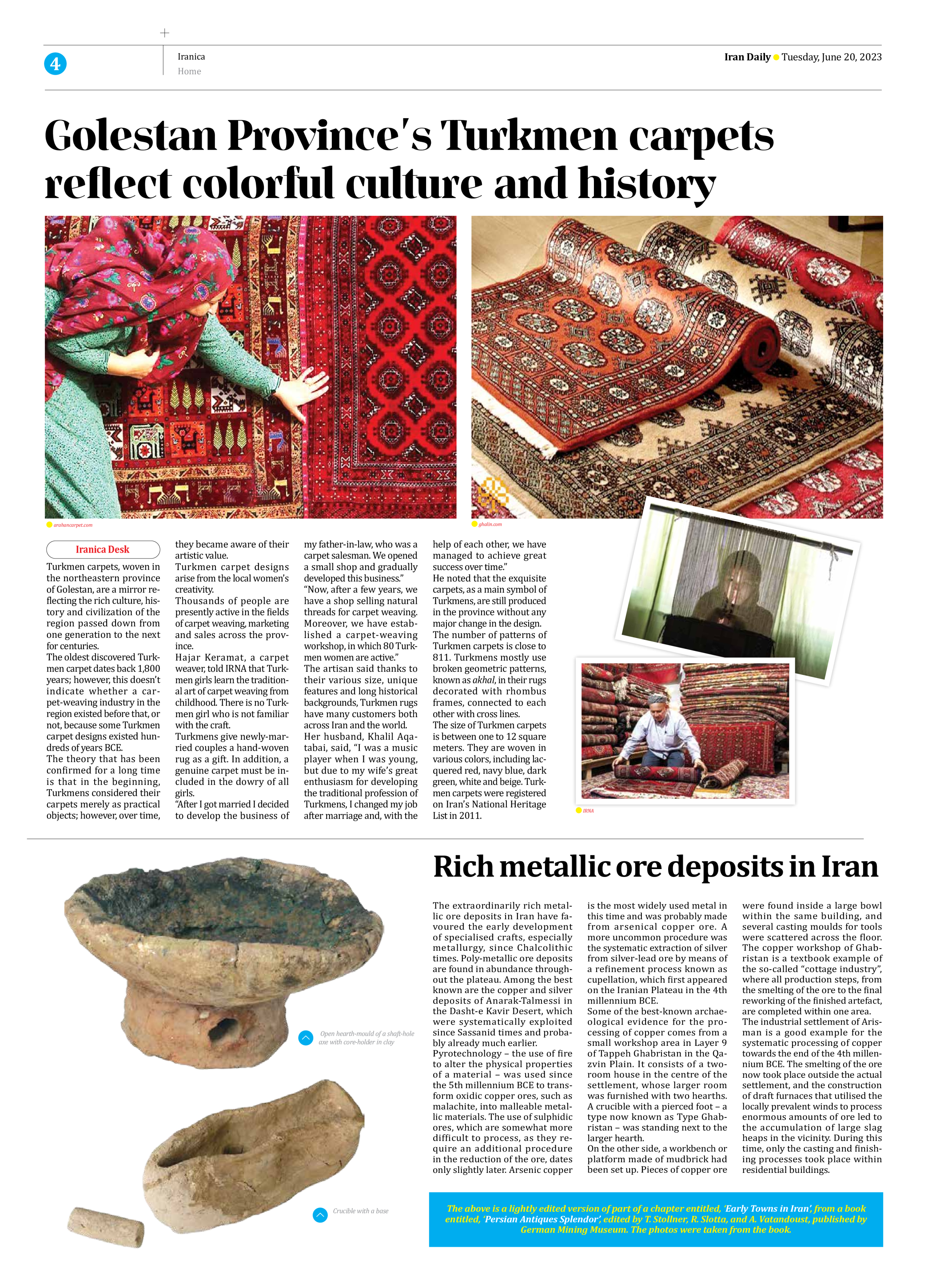
Rich metallic ore deposits in Iran
The extraordinarily rich metallic ore deposits in Iran have favoured the early development of specialised crafts, especially metallurgy, since Chalcolithic times. Poly-metallic ore deposits are found in abundance throughout the plateau. Among the best known are the copper and silver deposits of Anarak-Talmessi in the Dasht-e Kavir Desert, which were systematically exploited since Sassanid times and probably already much earlier.
Pyrotechnology – the use of fire to alter the physical properties of a material – was used since the 5th millennium BCE to transform oxidic copper ores, such as malachite, into malleable metallic materials. The use of sulphidic ores, which are somewhat more difficult to process, as they require an additional procedure in the reduction of the ore, dates only slightly later. Arsenic copper is the most widely used metal in this time and was probably made from arsenical copper ore. A more uncommon procedure was the systematic extraction of silver from silver-lead ore by means of a refinement process known as cupellation, which first appeared on the Iranian Plateau in the 4th millennium BCE.
Some of the best-known archaeological evidence for the processing of copper comes from a small workshop area in Layer 9 of Tappeh Ghabristan in the Qazvin Plain. It consists of a two-room house in the centre of the settlement, whose larger room was furnished with two hearths. A crucible with a pierced foot – a type now known as Type Ghabristan – was standing next to the larger hearth.
On the other side, a workbench or platform made of mudbrick had been set up. Pieces of copper ore were found inside a large bowl within the same building, and several casting moulds for tools were scattered across the floor. The copper workshop of Ghabristan is a textbook example of the so-called “cottage industry”, where all production steps, from the smelting of the ore to the final reworking of the finished artefact, are completed within one area.
The industrial settlement of Arisman is a good example for the systematic processing of copper towards the end of the 4th millennium BCE. The smelting of the ore now took place outside the actual settlement, and the construction of draft furnaces that utilised the locally prevalent winds to process enormous amounts of ore led to the accumulation of large slag heaps in the vicinity. During this time, only the casting and finishing processes took place within residential buildings.
The above is a lightly edited version of part of a chapter entitled, ‘Early Towns in Iran’, from a book entitled, ‘Persian Antiques Splendor’, edited by T. Stollner, R. Slotta, and A. Vatandoust, published by German Mining Museum. The photos were taken from the book.







